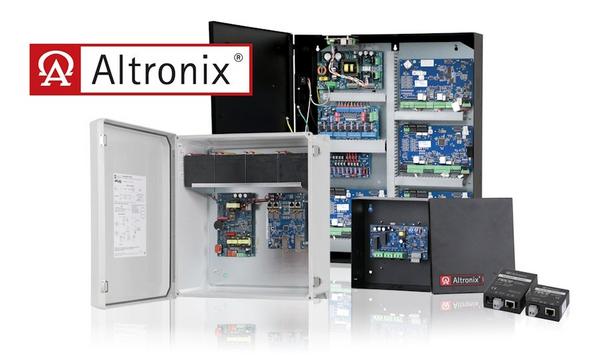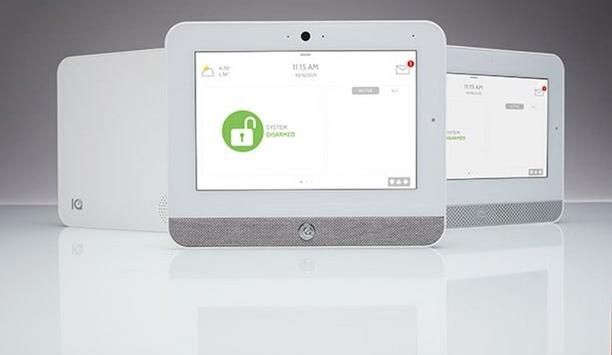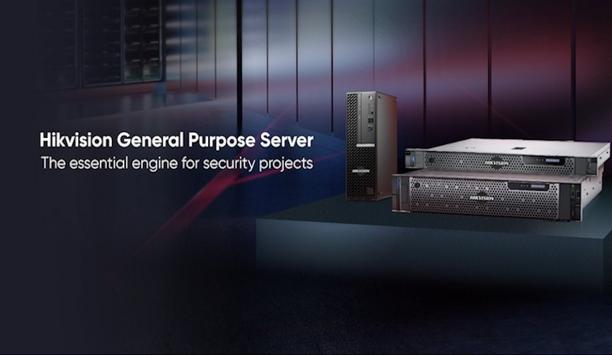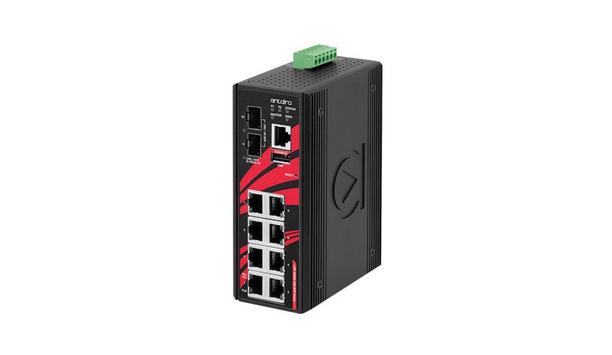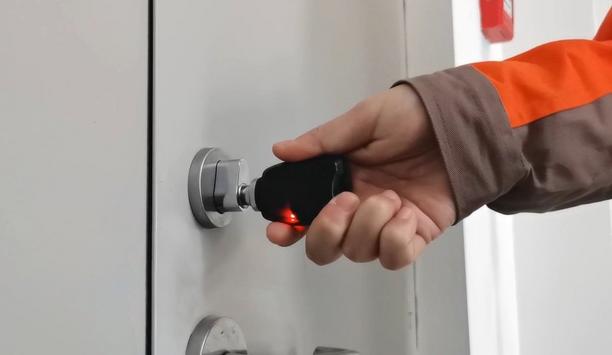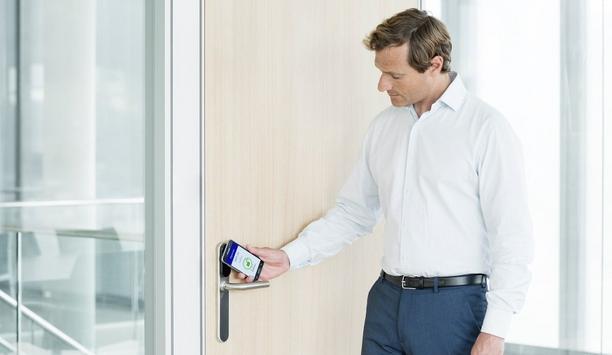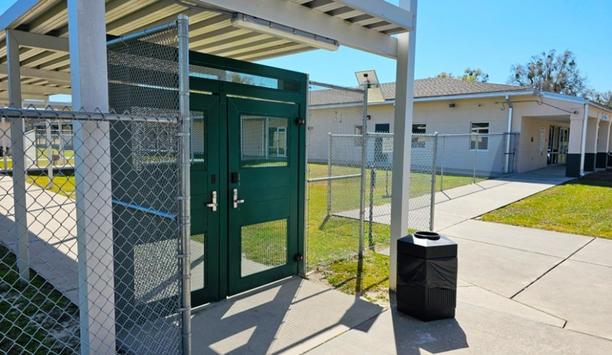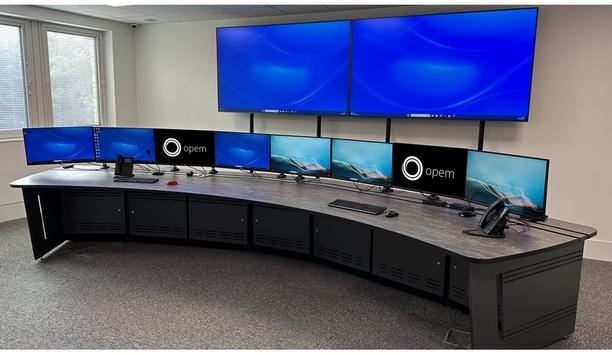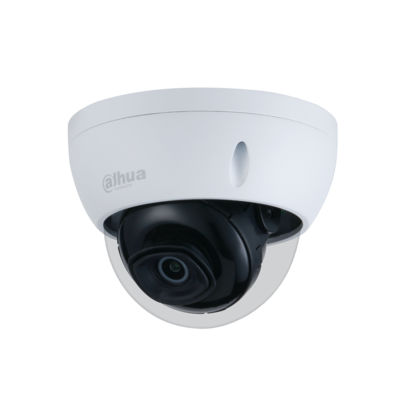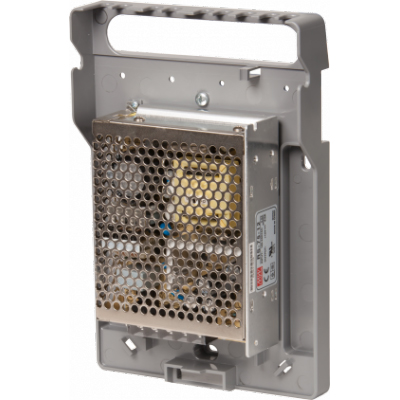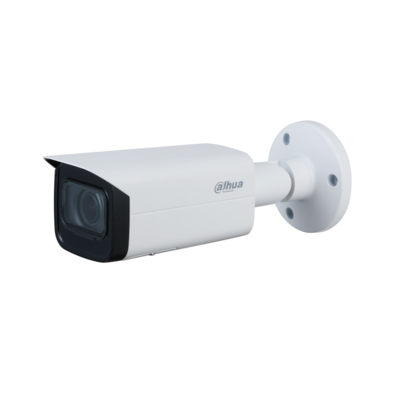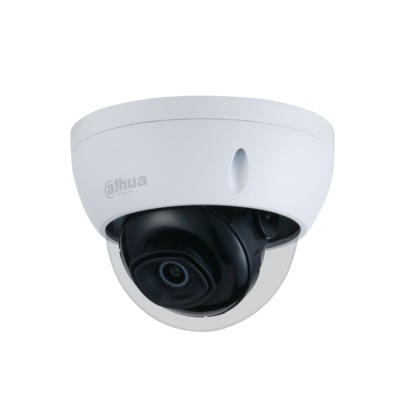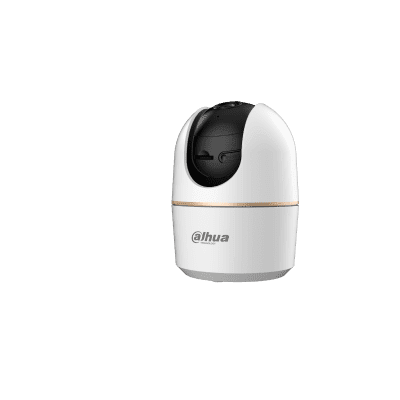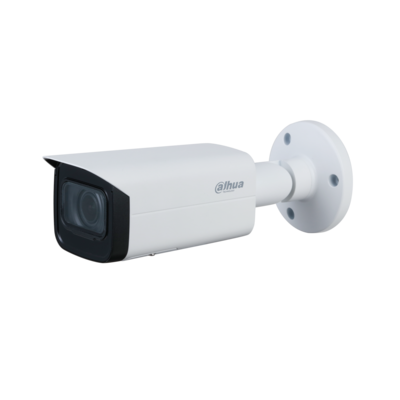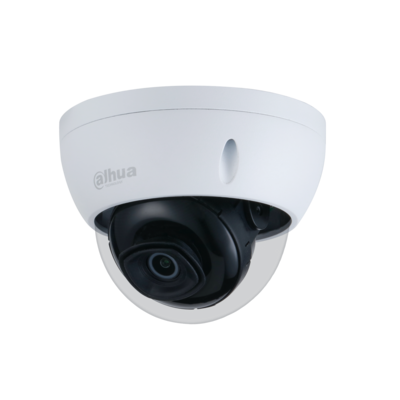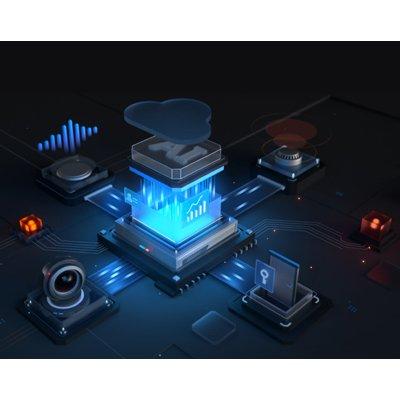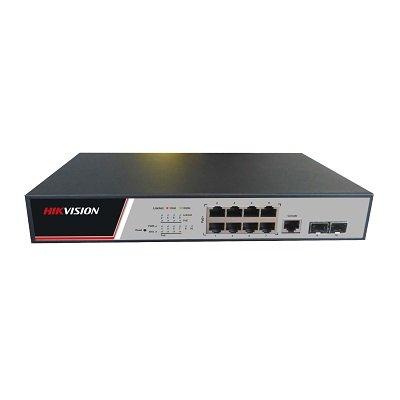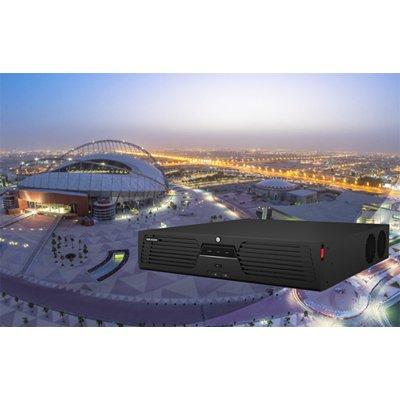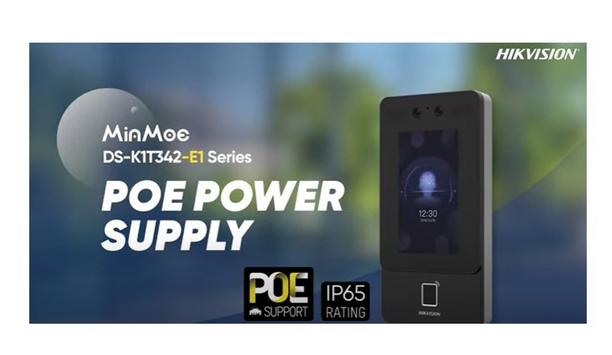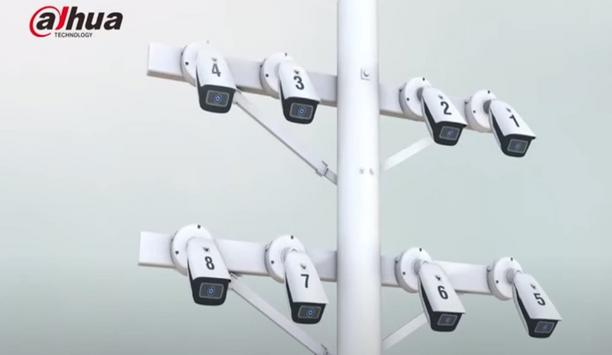Power Supplies
Videx Security has launched the 2870, a cutting-edge interface device designed for its popular range of 2-wire video kits, 2300 2-wire video bus system and 2200 digital bus system. The highly versatile module is set to transform how users manage and control their intercom systems, offering unprecedented flexibility and enhanced security features. Videx telephone The 2870 allows audio calls to be received on a mobile phone or landline, either as a replacement for a phone The 2870 allows audio...
Altronix, the recognised pioneer in power and data transmission products for the professional security industry, is displaying the company’s latest innovations here at ISC West in booth #11073. Features include integrated power and access control solutions that streamline installation and reduce labour costs, and the latest solutions to deploy IP devices utilising coax, fibre or Ethernet infrastructure. Deployment of advanced IP devices "Altronix continues to deliver new and...
Delta, a pioneer in power management and smart green solutions, highlighted at Hannover Messe 2025 a versatile set of AI-driven smart manufacturing, energy infrastructure, and data centre solutions. These include the award-winning D-Bot series cobots, featuring advanced cognitive capabilities and integration with NVIDIA Omniverse to develop next-generation digital twins; and DeltaGrid®, the AI-enabled energy management platform to optimise efficiency in the energy infrastructure supporting...
Johnson Controls, the pioneer for smart, healthy and sustainable buildings, announced the launch of IQ Panel 5. Powered by a Qualcomm® DrangonWing™ processor, the IQ Panel 5 preserves the features of the IQ Panel 4 that end users know and love while delivering a new powerful platform of the future. The IQ Panel 5 will be on display at ISC West 2025 in Las Vegas, Nevada, from March 31-April 4 (Booth 18033) for attendees to experience firsthand. Intuitive IQ Panel 5 packs “Deale...
Verkada, a pioneer in cloud-based physical security solutions, announced a new integration with SimonsVoss SmartIntego wireless locks at its VerkadaOne London conference. An extension of its flagship conference in the United States, VerkadaOne London convened more than 400 IT and physical security pioneers to connect and learn about new solutions from Verkada that are empowering physical security pioneers to be more proactive and efficient than ever. Partnership with SimonsVoss "I'm proud to...
Hikvision has announced the launch of its new-generation General Purpose Servers, including Tower Workstations and Rackmount Servers, designed to elevate the performance and reliability of systems for security projects. The new servers are engineered to excel even in the most demanding application scenarios, offering superior hardware, flexible configuration options, and industry-pioneering, end-to-end quality assurance. Range of General Purpose Servers Hikvision aims to provide users with a...
News
Power over Ethernet (PoE) switches have fundamentally transformed how devices are powered and connected to industrial networks. By transmitting both power and data through a single Ethernet cable, industrial PoE switches enable the deployment of Powered Devices (PD), such as IP cameras, wireless access points, VoIP phones, and sensors. New generation of PoE switches New generation of low-voltage PoE switches able to operate on input voltages below 48VDC Standard PoE Ethernet switches supply PDs with clean, stable DC power compliant with the IEEE’s 802.3af/at/bt PoE specifications. In order to do this, they usually require 48VDC (Direct Current Voltage) input, and are unable to properly supply PoE to devices in settings where this voltage is not accessible. This article explores a new generation of low-voltage PoE switches able to operate on input voltages below 48VDC. Internal DC-to-DC power-boosting technology enables these switches to convert 12-36VDC input to 48-56VDC output, ensuring seamless power delivery for PDs in compliance with IEEE 802.3 PoE standards. IEEE specifies 48VDC input on devices Due to its stability, virtually all communication devices utilise direct current (DC) sourced from a power supply, converting alternating current (AC) into DC or a DC battery. IEEE specified 48VDC in its PoE standards because it balances efficient power transmission, voltage drop considerations over long Ethernet cable runs, and electrical safety thresholds. IEEE’s original PoE standard PoE operates within a flexible voltage range rather than a fixed 48VDC While many PoE devices can operate on battery power, the vast majority of enterprise and industrial PoE networks derive power from AC-to-DC power supplies converting grid electricity. PoE operates within a flexible voltage range rather than a fixed 48VDC. The IEEE’s original PoE standard, 802.3af, along with subsequent standards 802.3at and 802.bt, specify a voltage range requirement of 44 to 57 volts. Power standard PoE switches Industrial networks continuously change and expand into new areas, unlocking opportunities even in locations without 48VDC input to power standard PoE switches. Low voltage input switches represent an innovative new solution, eliminating the need for complex setups like connecting four 12V batteries in series to achieve 48VDC. By simplifying power requirements, low voltage input Ethernet switches save space, reduce complexity, and enhance reliability by removing the need for additional voltage converters for lower-voltage devices. Below are some applications where low-voltage PoE switches excel, particularly in remote sites without readily available power outlets. Smart buses These vehicles are networked to improve transportation efficiency and the passenger experience. Smart buses can be frequently equipped with IP cameras, WAPs, GPS, and VoIP, yet have only DC12V input for a PoE switch to draw power. Similar power challenges arise in RVs, mobile command centres, trucks, and ships. Remote sites Off-grid industrial sites use solar-powered battery systems featuring DC12V, DC18V, and DC36V inputs Off-grid industrial sites use solar-powered battery systems featuring DC12V, DC18V, and DC36V inputs. Depending on the size of the panel and the sunlight conditions, different types of high-capacity batteries can be charged to power a low-voltage industrial PoE switch, greatly simplifying connectivity for multiple PDs. These PDs can include standalone roadside devices, access control/VoIP, agricultural monitoring, surveillance trailers, and Intelligent Transportation Systems. Besides solar, batteries can be charged by a backup generator or connected to the grid during off-peak hours, when available. Though far less common, wind, hydroelectrical, and geothermal power are power options. Factory automation Although these electrical systems can range from 12VDC to 36VDC, the de facto voltage for industrial automation and control systems is 24VDC. Relays, industrial sensors, actuators, and PLCs use 24VDC, for instance. A low-voltage PoE switch will operate on various 24VDC power supplies in industrial automation systems. The low voltage PoE switch will power network devices directly from a properly specified 24VDC power supply without needing a separate high-voltage wall outlet. Mobile trailers Solar-powered mobile security trailers offer a key for where reducing the use of long cables improves safety Solar-powered mobile security trailers allow for quick deployment in various scenarios, such as construction sites, live events, parking lots, schools, and general crowd control. Trailers provide a security presence by being equipped with multiple IP cameras, speakers, wireless radios, lights, and other hardware to identify, find, and deter criminals and capture incidents 24/7, day or night. Solar-powered mobile security trailers offer a solution for where reducing the use of long electrical cables improves safety. In these situations, a low-voltage PoE switch with an internal DC boost is required to convert 12-36VDC input into the necessary 48-56VDC PoE output for connected PDs. Antaira power boost Antaira's "power boost" technology utilises the switch's integrated circuitry, typically a boost converter, to efficiently store energy in an inductor during the switch-on phase and release it during the switch-off phase. This process results in a higher output voltage than the input, ensuring reliable power delivery. This way, PDs operate on a standard 48VDC PoE output even when the industrial type of switch is supplied with a lower voltage input. It also eliminates the need for a separate step-up transformer and, in turn, saves space in an enclosure using only one device.
At this year’s Security and Policing, 3DX-Ray announced a contract for the sale of another ThreatScan®-LS3 system to a European Law Enforcement Agency. This sale is a follow-on order for similar systems already in service with the agency's EOD and search teams. 3DX-RAY ThreatScan®-LS3 is a compact yet powerful portable x-ray scanning system, ideal for mobile operations. The 305mm x 256mm imaging area is large enough for typical bags and packages to be scanned in one scan. 3DX-Ray on stand B5 3DX-Ray will showcase their newest portable x-ray system, the ThreatScan AS2, at this year’s exhibition They will find 3DX-Ray on stand B5 at this year’s Security and Policing, which starts at the Farnborough International Exhibition and Conference Centre, where we will be demonstrating the ThreatScan®-AS2, ThreatScan®-AS1(ISC), ThreatScan® LS systems, and the world’s most capable mailroom scanner the AXIS™-CXi Cabinet System. 3DX-Ray will showcase their newest portable x-ray system, the ThreatScan AS2, at this year’s exhibition. The smaller AS2 panel has been specifically designed for operators working in areas where access is very restricted. It has a smaller footprint and uses the latest glassless technology inside to reduce size and weight. It boasts an excellent dead zone cut off, down to less than 3 mm on two sides. Another advantage of the AS2 panel is that its reduced size and weight make it ideal for backpacking and rapid deployment. ThreatScan®-AS1(ISC) The 3DX-RAY ThreatScan®-AS1(ISC) is a robust amorphous silicon portable x-ray inspection system. It comprises as standard a detector panel with an imaging area of 43cm x 35cm, a new high penetration 150kV generator, and a laptop along with batteries, chargers, the user-friendly 3DX-RAY ThreatSpect software, wireless communication and transport case. The AS1(ISC) is simple to use and produces extremely high quality, sub-millimetre resolution images in real time. User applications and threat scenarios ThreatScan®-AS1(SC) offers high flexibility in deployment to meet the wide variety of user applications The system is fully integrated, with a primary display, computer, communications and power supplies consolidated into a single, waterproof rugged case. With the addition of a secondary display tablet, ThreatScan®-AS1(SC) offers high flexibility in deployment to meet the wide variety of user applications and threat scenarios. ThreatScan®-LS portable systems The portable ThreatScan® LS systems allow bomb technicians to perform rapid and accurate threat assessment in a wide range of operational scenarios. Each system consists of a generator, a detection panel and an imaging station as standard. The detector panel is lightweight and incredibly thin and is available in either large or compact format. General security inspection The complete system can penetrate up to 34 mm steel at 120kV while producing high quality images The complete system can penetrate up to 34 mm steel at 120kV while producing high quality, sub-millimetre resolution images. ThreatScan® can be used to inspect suspect bags and packages in mass transit areas as well as general security inspection by first responders such as Police, Military and Private and Government Security agencies. AXIS™-CXi cabinet system The CXi is a cabinet scanning system with materials discrimination to aviation standard. The benefit of the materials discrimination image is that it highlights organic material in orange and metallic material in blue – if it is a mixed composition, it is coloured green. The system represents these materials accurately and has been verified according to the standards used by the aviation sector. This added image information is extremely helpful for an operator as it makes their assessment of potential threats easier and more reliable.
Vigitron, a pioneer in networking solutions for security applications, introduces the Vi50101 Mini Fibre Media Converter, a powerful yet ultra-compact solution designed to expand fibre connectivity with ease. With increasing bandwidth demands from high-megapixel and multi-sensory cameras, fibre usage is rapidly growing, particularly for long-distance transmissions. However, many network switches have limited fibre ports, creating expansion challenges. Vi50101 plug-and-play solution Powered by PoE, the ViSO101 eliminates the need for external power adapters, simplifying installation The Vi50101 addresses this by converting fibre to UTP, allowing seamless fibre port expansion without the need to replace existing equipment. The Vi50101 is a true plug-and-play solution for expanding fibre networks without additional power requirements. Supporting up to 1G Ethernet speeds and transmission distances of up to 80 km, it is ideal for security and industrial applications. Powered by PoE, the ViSO101 eliminates the need for external power adapters, simplifying installation. Its compact design allows for flexible placement, whether in-line, wall-mounted, or on a DIN rail, making it a versatile choice for a wide range of network environments. Key features SFP Standard - Compliant with standard Small Format Pluggable (SFP) fibre converters. PoE-Powered - No external power needed, works directly with PoE from switches. Long-Distance Transmission - Extends fibre connectivity up to 80 km. High-Speed Performance - Auto-select 10/100/1000Base-T Ethernet. Compact & Durable - Built to withstand harsh environments (−10°C to +70°C). Versatile Mounting Options - Supports in-line, wall-mount, or DIN rail installation.
SharpEagle, a pioneer in industrial safety solutions, proudly highlights its robust presence in the Forklift Safety Light Market, as reported in the latest Prospect Research Reports study. The comprehensive analysis reflects SharpEagle’s dedication to enhancing workplace safety through high-performance and reliable safety lighting products for material handling operations. Demand for forklift safety lights SharpEagle takes these needs by delivering safety solutions developed to safeguard workers The report underscores the increasing demand for forklift safety lights, driven by heightened workplace safety regulations and the need for operational efficiency in warehouses, Mining, Manufacturing, and logistics hubs. SharpEagle addresses these demands by delivering advanced safety solutions designed to safeguard workers and optimise workflows. Key features of SharpEagle forklift safety lights Powerful LED Illumination: Ensures clear and visible warnings to reduce the risk of accidents and collisions. Durable Construction: Engineered to endure tough industrial environments, ensuring long-lasting performance. Customizable Designs: Offers various beam configurations and colour options to meet diverse operational requirements. Energy-Efficient Technology: Combines superior illumination with low power consumption for sustainable operations. High-quality safety solutions The report projects marked growth in the forklift safety light market, fuelled by increased automation As businesses prioritise safety and efficiency, SharpEagle remains focused on delivering high-quality safety solutions that make a real difference. Being recognised in the market report underscores the commitment to creating safer work environments for industries. The report projects significant growth in the forklift safety light market, fuelled by increased automation and the adoption of safety technologies. Industry safety standards With its emphasis on innovation and customer-centric design, SharpEagle is well-equipped to meet the evolving needs of the industry. SharpEagle empowers businesses to minimise risks, enhance productivity, and comply with industry safety standards by offering dependable and effective safety solutions.
LifeSafety Power’s B150 Intelligent Step-Down Converter provides economical remote power management, monitoring and control of enterprise power solutions. The B150 dual-voltage conversion modules offer an additional voltage in a FlexPower Unified Power Solution® by converting a higher input voltage to a lower output. LifeSafety Power NetLink® Now, every part of LifeSafety Power’s FlexPower series yields managed power capabilities in a single enclosure with RS485 communications and when paired with LifeSafety Power NetLink® technology. The B150 is jumper selectable for a fixed 12VDC or an adjustable, user-defined range between 3-18VDC at 6 amps maximum current. An on-board LED display provides status updates on output voltage, current and input power. Remote power cycling and programming Combined with NetLink-managed power technology, users receive notifications of power fault or voltage drops and can also perform remote power cycling and programming. The B150 allows for quick, onsite power adjustments for system components with unique needs, such as access control readers, security cameras, lighting, wireless and IT devices and components.
Robotic Assistance Devices, Inc. (RAD), a subsidiary of Artificial Intelligence Technology Solutions, Inc., is proud to announce the launch of AVA™ (Autonomous Verified Access) Gen 4, an advanced AI-powered access control solution for both residential and commercial applications. Completely redesigned inside and out, AVA Gen 4 integrates new hardware, an entirely rewritten software platform, and groundbreaking security enhancements to serve a broader range of clients, from homeowner associations (HOAs) to logistics and distribution centres. Built for performance, designed for reliability AVA Gen 4 marks a major leap forward in intelligent access control. With a fully re-engineered system, it delivers significant improvements in performance, reliability, and security: All-New Software & Hardware: Every line of AVA’s code has been rewritten, optimised for its powerful NVIDIA-based processing platform running on Ubuntu. This transition from Intel/Microsoft architecture results in faster decision-making, a more fluid user interface, and improved adaptability for future updates. Integrated Power & Controls: AVA Gen 4 consolidates all power supply and system controllers within its chassis, eliminating the need for an external utility box. This simplifies installation, reduces maintenance points, and enhances overall system integrity. Lighter, Stronger, and More Tested Than Ever: A completely restructured design makes AVA Gen 4 33% lighter while achieving the highest reliability of any RAD device to date. Rigorous testing ensures optimal performance across all deployment environments. Next-level security features Industry-First Anti-Tailgating Technology: AVA Gen 4 introduces an advanced tailgating detection system. If a pedestrian follows a vehicle through the gate or if two vehicles attempt entry under a single authorisation, AVA triggers instant alerts. These capabilities set a new standard for access control security, helping prevent unauthorised entry with greater precision than ever before. AI-Enhanced Audio for Superior Communication: With real AI-powered audio enhancement, AVA Gen 4 ensures crystal-clear communication in any environment. This upgrade improves speech clarity for visitors, guards, and remote monitoring centres, enhancing security interactions at every access point. Expanding market reach Earlier versions of AVA had been widely deployed in large-scale industrial and logistics operations While earlier versions of AVA had been widely deployed in large-scale industrial and logistics operations, AVA Gen 4 extends its capabilities into the residential sector. This expansion represents a major shift, unlocking new opportunities for AI-driven access control in a much larger and more diverse market. Whether securing a high-traffic distribution centre or enhancing security for a gated community, AVA Gen 4 delivers the intelligence, automation, and cost savings needed to modernise access control. Latest advancements in AI and automation “AVA Gen 4 is a direct result of customer demand and our commitment to continuous innovation,” said Steve Reinharz, CEO/CTO of AITX and RAD. “By integrating feedback from our clients and leveraging the latest advancements in AI and automation, we’ve developed a flexible and powerful access control solution suited for both logistics hubs and residential communities.” HOAP™ and SARA™ with AVA Gen 4: Elevating security HOAP was designed to provide control companies, HOAs, and locals with accurate, real-time data HOAP (Homeowner Association Portal) was designed to provide management companies, HOAs, and residents with accurate, real-time information about access events, security alerts, and community activity. With its integration into AVA Gen 4, HOAP ensures that all stakeholders have a clear view of the security landscape, empowering them to make informed decisions and respond promptly to any concerns. AI-powered access control systems “AVA for HOAs has been one of the most requested solutions from our extensive dealer network,” added Reinharz. “We expect rapid penetration into the residential market carried in by our dealers responding to HOAs looking to save money by reducing costs by reducing, even eliminating, guarding hours." "As HOAs recognise the value of integrating advanced, AI-powered access control systems to enhance security and streamline operations. The demand is clear, and we’re poised to meet it with AVA Gen 4.” Opportunity for AVA Gen 4 U.S. gated ward market is sizable, with about 25,000 gated wards housing over 15 million people The U.S. gated community market is sizable, with nearly 25,000 gated communities housing over 15 million people. Recent estimates suggest that 5% of the U.S. population now resides in these communities, with the highest concentrations found in California, Florida, and Texas. This substantial market highlights the vast opportunity for AVA Gen 4 to enhance security and operational efficiency for a wide range of residential environments. SARA’s automated alerts and real-time responses SARA (Speaking Autonomous Responsive Agent) takes communication a step further by offering immediate, AI-driven interactions during security incidents. Whether it’s notifying management of unauthorised access, alerting security personnel of potential threats, or responding to specific queries, SARA ensures that communication flows seamlessly across the network. With SARA’s automated alerts and real-time responses, security incidents are addressed without delay, ensuring a swift and coordinated reaction. Adoption of access control solution RAD is set to scale show rapidly, ensuring general adoption of this extreme access control solution The Company expects to begin deploying AVA Gen 4 in the second quarter of 2025, with initial installations focused on key commercial and residential locations. As demand grows, RAD is prepared to scale production rapidly, ensuring widespread adoption of this revolutionary access control solution. AITX, through its primary subsidiary, Robotic Assistance Devices, Inc. (RAD) continues to redefine security and facility management through its proprietary AIR (Autonomous Intelligent Response) technology, redefining the nearly $50 billion (US) security and guarding services industry. Security guarding and monitoring model RAD solutions are specifically designed to provide cost savings to businesses of between 35%-80% when compared to the industry’s existing and costly manned security guarding and monitoring model. RAD delivers these tremendous cost savings via a suite of stationary and mobile robotic solutions that complement, and at times, directly replace the need for human personnel in environments better suited for machines. All RAD technologies, AI-based analytics and software platforms are developed in-house. Delivery of artificial intelligence-based solutions Each Fortune 500 client has the potential of making numerous reorders over time RAD has a prospective sales pipeline of over 35 Fortune 500 companies and numerous other client opportunities. RAD expects to continue to attract new business as it converts its existing sales opportunities into deployed clients generating a recurring revenue stream. Each Fortune 500 client has the potential of making numerous reorders over time. AITX is an innovator in the delivery of artificial intelligence-based solutions that empower organisations to gain new insight, solve complex challenges and fuel new business ideas. Through its next-generation robotic product offerings, AITX’s RAD, RAD-R, RAD-M and RAD-G companies help organisations streamline operations, increase ROI, and strengthen business. Patrolling and guard services AITX technology improves the simplicity and economics of patrolling and guard services and allows experienced personnel to focus on more strategic tasks. Customers augment the capabilities of existing staff and gain higher levels of situational awareness, all at drastically reduced cost. AITX solutions are well suited for use in multiple industries such as enterprises, government, transportation, critical infrastructure, education, and healthcare.


Expert commentary
In daily work and life, various locks have always played the role of protecting asset safety. In different usage scenarios, the most appropriate lock must be selected to maximise benefits. In the past applications, the difficulties encountered by managers are as follows. Unlocking authority is difficult to control, unclear access records, emergency unlocking, and troublesome upgrade and installation. Through the following points, how the key-centric access management system solves such problems. Access management system The key-centric access management system, also known as intelligent passive electronic lock system, which is based on three elements: electronic keys, electronic cylinders and management software, can provide powerful and traceable access control. Each smart key is unique and cannot be copied, and in the event of loss or theft, these keys can be quickly disabled. Each smart key is unique and cannot be copied, and in the event of loss or theft, these keys can be disabledIn the process of using traditional mechanical locks, it is not difficult to find that it is quite complex to realise the access control of unlocking. The difficulty is that the keys can be copied at will, the use records are not clear, and the credibility of employees cannot be guaranteed... etc. For managers, this is a safety issue that cannot be ignored. Mechanical lock system And through the key-centric access management system, we can accurately assign access authority for each user, and set different access authority for locks in different areas. For example, we can set the XX user to have access to the archive room (A) from 10:00 on May 1, 2021 to 17:00 on June 1, 2021, within this time range. Outside this time range, there will be no unlock authority. The flexibility of the traditional mechanical lock system is insufficient. There is no clear record to determine who entered the area. It is usually a simple paper record that records the unlocking records of the employees. The authenticity and validity of the system need to be examined. In the key-centric access management system, when an employee unlocks the lock, the unlock record will be synchronised to the management terminal. Remote authorised unlocking With the key-centric access management system, remote authorised unlocking can be realised Through secondary records, managers can easily track employees and supervise employees' visits to each area. In daily work, there are often emergencies that require temporary visits to certain specific areas. If you encounter a situation where the distance is extremely long, and you don’t have the key to that area, you can imagine how bad this is. The process of fetching the keys back and forth is time-consuming and laborious. With the key-centric access management system, remote authorised unlocking can be realised. You can apply for the unlocking authority through the mobile APP, or you can temporarily issue the unlocking authority for the area on the management terminal, which saves time and effort. When faced with the failure of ordinary mechanical locks to meet management needs, some managers can already think of upgrading their management system, that is, the intelligent access control system. Passive electronic locks But before making this decision, the manager will inevitably consider the various costs brought about by the upgrade, including installation costs (cable cost), learning costs, and maintenance costs. Since most of the universal intelligent access control systems on the market require wiring and power supply, the cost of transformation and upgrading is quite high for managers who have such a huge amount of engineering. The key-centric access management system is the ‘gospel’ for managers. Since passive electronic locks and ordinary mechanical locks have the same size, they can be directly retrofitted to existing hardware, and they can be replaced step by step simply and easily. At present, the key-centric access management system is being known and applied by more and more managers and enterprises. Application industries include, such as power utilities, water utilities, public security, telecommunication industry, transportation, etc.
The 2020s will be a wireless decade in access control, says Russell Wagstaff from ASSA ABLOY Opening Solutions EMEA. He examines the trends data, and looks beyond mobile keys to brand new security roles for the smartphone. The benefits of wire-free electronic access control are well rehearsed. They are also more relevant than ever. A wireless solution gives facility managers deeper, more flexible control over who should have access, where and when, because installing, operating and integrating them is easier and less expensive than wiring more doors. Battery powered locks Many procurement teams are now aware of these cost advantages, but perhaps not their scale. Research for an ASSA ABLOY Opening Solutions (AAOS) benchmarking exercise found installation stage to be the largest contributor to cost reduction. Comparing a typical installation of battery-powered Aperio locks versus wired locks at the same scale, the research projected an 80% saving in installers’ labour costs for customers who go cable-free. Battery powered locks all consume much less energy than traditional wired locks Operating costs are also lower for wireless: Battery powered locks all consume much less energy than traditional wired locks, which normally work via magnets connected permanently to electricity. Wireless locks only ‘wake up’ when presented with a credential for which they must make an access decision. AAOS estimated a 70% saving in energy use over a comparable lock’s lifetime. Find out more about wireless access control at ASSA ABLOY's upcoming 29th June webinar Deploying wireless locks In short, every time a business chooses a wireless lock rather than a wired door, they benefit from both installation and operating cost savings. A recent report from IFSEC Global, AAOS and Omdia reveals the extent to which the advantages of wireless are cutting through. Responses to a large survey of security professionals — end-users, installers, integrators and consultants serving large corporations and small- to medium-sized organisations in education, healthcare, industrial, commercial, infrastructure, retail, banking and other sectors — suggest almost four locations in ten (38%) have now deployed wireless locks as a part or the whole of their access solution. The corresponding data point from AAOS’s 2014 Report was 23%. Electronic access control Electronic access control is less dependent than ever on cabling Without doubt, electronic access control is less dependent than ever on cabling: Even after a year when many investments have been deferred or curtailed, the data reveals fast-growing adoption of wireless locks, technologies and systems. Is mobile access control — based on digital credentials or ‘virtual keys’ stored on a smartphone — an ideal security technology for this wire-free future? In fact, the same report finds mobile access is growing fast right now. Among those surveyed, 26% of end-users already offer mobile compatibility; 39% plan to roll out mobile access within two years. Before the mid-2020s, around two-thirds of access systems will employ the smartphone in some way. The smartphone is also convenient for gathering system insights Driving rapid adoption What is driving such rapid adoption? The convenience benefits for everyday users are obvious — witness the mobile boom in banking and payments, travel or event ticketing, transport, food delivery and countless more areas of modern life. Access control is a natural fit. If you have your phone, you are already carrying your keys: What could be easier? IBM forecasts that 1.87 billion people globally will be mobile workers by 2022 Less often discussed are the ways mobile management makes life easier for facility and security managers, too. Among those polled for the new Wireless Access Control Report, almost half (47%) agreed that ‘Mobile was more flexible than physical credentials, and 36% believe that mobile credentials make it easier to upgrade employee access rights at any time.’ IBM forecasts that 1.87 billion people globally will be mobile workers by 2022. Workers in every impacted sector require solutions which can get the job done from anywhere: Access management via smartphone offers this. Site management device The smartphone is also convenient for gathering system insights. For example, one new reporting and analytics tool for CLIQ key-based access control systems uses an app to collect, visualise and evaluate access data. Security system data could contribute to business success. The app’s clear, visual layout helps managers to instantly spot relevant trends, anomalies or patterns. It’s simple to export, to share insights across the business. Reinvented for learning — not just as a ‘key’ or site management device — the phone will help businesses make smarter, data-informed decisions. The smartphone will also play a major role in security — and everything else — for an exciting new generation of smart buildings. These buildings will derive their intelligence from interoperability. Over 90% of the report’s survey respondents highlighted the importance of integration across building functions including access control, CCTV, alarm and visitor management systems. Genuinely seamless integration They offer greater peace of mind than proprietary solutions which ‘lock you in’ for the long term Yet in practice, stumbling blocks remain on the road to deeper, genuinely seamless integration. More than a quarter of those polled felt held back by a lack of solutions developed to open standards. ‘Open standards are key for the momentum behind the shift towards system integration,’ notes the Report. As well as being more flexible, open solutions are better futureproofed. Shared standards ensure investments can be made today with confidence that hardware and firmware may be built on seamlessly in the future. They offer greater peace of mind than proprietary solutions which ‘lock you in’ for the long term. Open solutions and mobile management are critical to achieving the goals which end-users in every vertical are chasing: scalability, flexibility, sustainability, cost-efficiency and convenience.
The security market in 2016 saw an uptick in the economy, the introduction of new technologies, increased compliance requirements in key verticals, and rising concerns over the need for greater security. Users interested in upgrading or deploying new systems consistently chose networked system platforms. This trend further drove the demand for adaptive transmission solutions as a means of repurposing existing analogue infrastructure to accommodate IP devices on a networked platform. As this migration accelerated, product feature sets continued to evolve with the inclusion of advanced communications that let you monitor, control and report power/diagnostics from anywhere. These new products have also helped to stimulate new business opportunities for integrators by expanding their service offerings to include remote monitoring of these devices as a new source of recurring monthly revenue (RMR). PoE and adaptive transmission solutions In last year’s 2016 forecast, we discussed the integration trend and how PoE and adaptive transmission solutions with network communications were rapidly gaining traction and market share. As the year progressed, the trend increased with customers migrating towards systems that provided more data, faster transmission rates and more versatility, and accessibility anytime from anywhere. Altronix responded with more advanced product solutions. This growing trend makes it more critical than ever for the core power and transmission infrastructure that make up the foundation of these systems to include network communications for true integration. As effective and efficient as integrated IP systems have become, the cost to upgrade or install new networked systems can be prohibitive. In 2017, security professionals will require expanded options to capitalise on existing infrastructure while accommodating IP devices with new levels of performance. These new products will greatly reduce installation and maintenance costswhen deploying orupgrading systems We will see the introduction of new products that offer greater levels of integration with bundled capabilities such as PoE, network switches, versatile adaptive transmission capabilities to accommodate different types of cabling, greater bandwidth and speed, and management capabilities. These new products will greatly reduce installation and maintenance costs when deploying or upgrading systems. Altronix 2016 business overview Altronix’s evolution as a designer and manufacturer of versatile power supplies and accessories – and the addition of innovative PoE and adaptive transmission solutions with network communications – was significant in 2016. We have continued to deliver new products incorporating advances in power and communication technologies that solve real-world installation issues with the highest levels of performance and cost-efficiency. One of the most significant technologies contributing to our extensive portfolio of power and adaptive transmission products is our innovative LINQ™ Technology, which provides remote control of power, along with monitoring and reporting of diagnostics from anywhere you have internet access. LINQ completes the network communication cycle for networked systems by providing true integration for power supply and adaptive transmission products that are the foundation of every system. Altronix will continue to design, manufacture and introduce new power and adaptive transmission solutions in 2017 that live up to our longstanding reputation for outstanding quality, performance and reliability. See the full coverage of 2016/2017 Review and Forecast articles hereSave Save
Security beat
Across the security industry, power supplies are too often an afterthought and the first item in an access control system to be value-engineered. However, when the power supply fails on a high-end access control device, the system becomes a very expensive paperweight. Fortunately, there are now power supply units available that can enhance system reliability by providing remote diagnostics and real-time reporting and analytics. There is also a mistaken perception that all power supplies are the same, says David Corbin, Director of ASSA ABLOY’S Power Management Strategic Business Unit. Access control and security applications Power supplies today are more important than ever for access control and security applications The fact is, a properly designed unit for today’s market must have a wide input range, a myriad of features, interface to network, have adequate transient protection, good surge capability and a demonstrated quality level for mission critical reliability, he says. “Power supplies today are more important than ever for access control and security applications,” says Corbin. “From heavy snowstorms in the Midwest and East Coast to the two million Californians that experienced unprecedented power outages, extreme weather conditions have created chaos for millions over the past few months. These events have resulted in students being locked out of schools, hospitals darkening and electronic keypads or card readers shutting down. With events like these on the rise, and an increased reliance on the technology we use to get in and out of the spaces we occupy, power supplies are critical for keeping systems up and running and people safe and secure.” ASSA ABLOY's LifeSafety Power’s FPO Intelligent Power Supplies and Helix Redundant Power Systems Installing right power supplies ASSA ABLOY has a range of products within the power supplies category, including LifeSafety Power’s FPO Intelligent Power Supplies and Helix Redundant Power Systems. ASSA ABLOY’s acquisition of LifeSafety Power in September expanded the company’s offering of smart integrated access control power solutions for OEMs, integrators and end-users. Other ASSA ABLOY power supply products include Securitron AQ Series Switching Power Supplies, and eco-friendly, linear, plug-in and solar power supplies, as well as Power over Ethernet (PoE). Access control is crucial to security and life safety, says Corbin. And without power, any protective system is useless. When the right power supplies are installed correctly, the system will have built-in backup power that will be triggered during an outage. Dependable power supplies, with regularly replaced and appropriately sized backup batteries, are critical to keeping occupants safe in an emergency event. Other ASSA ABLOY power supply products include Securitron AQ Series Switching Power Supplies Periodic testing of the battery When it comes to extreme weather conditions, the result of a power outage can lead to hazardous situations for employees, patients, residents and students, he says. Buildings that require power to gain access can leave people stranded outside or locked inside. “When access controls are disabled, intruders can easily enter buildings without notice, affording the opportunity for interruptions to power distribution, water supplies and other necessary public utilities,” says Corbin. Preparation for the next big power outage should include the sizing of power supplies to the system requirement with a reasonable safety factor for foreseeable system expansion and a battery set that is sized for operating the system for a period of time greater than the planned requirement, he says. Using a ‘smart’ power supply provides early warning of an impending failure; and consistent, periodic testing of the battery set keeps the system in peak operating condition. Predictive maintenance of access control Predictive analytics and data harvesting can help with predictive maintenance of access control Redundancy ensures that power remains available in the event of a failure, regardless of whether it is a blackout situation or a failure of the power supply itself, says Corbin. “In critical power installations where redundancy is vital, the system must have a properly sized and maintained backup battery,” says Corbin. “Additionally, further redundancy can be achieved via products like our Helix systems that provide for seamless switching between two different power supplies in the event of an electrical failure of one of the power supplies.” Corbin also notes there is a growing want and need for more data and analytics in the access control field. End users increasingly expect access control systems to be able to integrate with building information systems. Predictive analytics and data harvesting can help with predictive maintenance of access control and building systems. For example, intelligent power supplies can identify problems before they happen – such as performing periodic, automated battery tests and then notifying a central monitoring location and/or a facility manager of a battery that needs replacement. Lock operation can also be monitored on a real-time basis for failure or impending failure of a secured door opening, he says.
Facial recognition has seen huge breakthroughs since the U.S. National Institute of Standards and Technology (NIST) first began testing in 2010. Accuracy has seen massive gains, especially from 2013-2018. In the 2018 test, the most accurate algorithm was 20 times more accurate than the 2013 equivalent. Essentially, 95 percent of the matches that failed in 2013 now yield correct results. Compare that to 2010-2013, when the most accurate algorithm reduced its error rate by 30 percent. This reduction in error rates since 2013 is due to wholesale replacement of the old algorithms with new ones based on deep convolutional neural networks — completely revolutionising the technology. Optimal recognition results SAFR says it delivers optimal recognition results with 99.86 percent accuracy in under 100 milliseconds One entrant in the newly energised market is RealNetworks, whose SAFR for Security is an AI-based facial recognition solution for live video that integrates video management system (VMS) solutions. With 24/7 monitoring, SAFR detects and matches millions of faces accurately in real time, enabling teams to manage a watchlist across any number of video feeds. SAFR says it delivers optimal recognition results with 99.86 percent accuracy in under 100 milliseconds, even in real-world conditions where faces are in motion, at different angles, under poor lighting, or partially obscured. SAFR builds on RealNetworks’ 23-year history in video technologies. Launched in July 2018, SAFR — secure, accurate facial recognition — is enabling new applications for security, convenience, and analytics. Create security responses “We seek to be the world’s most trusted facial recognition platform and are delighted to partner with customers in the security industry and elsewhere to shape a more secure, convenient future worldwide,” says Dan Grimm, Vice President of Computer Vision and General Manager of SAFR at RealNetworks. “Security professionals are asked to keep us safe 24/7, monitoring a burgeoning number of cameras, and we help make them more effective.” SAFR targets facial recognition for live video, identifying camera-unaware faces moving in real-world conditions. In the April 2019 NIST results, SAFR tested as the fastest and most compact solution among algorithms with less than 0.022 False Non-Match Rate — 62 percent faster than the average speed, according to the company. SAFR now provides capabilities such as live video overlays alerting security professionals to events in real time, automatic bookmarks with rich metadata for investigative work, and alerts that can be customised to create security responses. SAFR uses one-sixth the compute power of competing facial recognition solutions Facial recognition algorithms Five years ago, facial recognition algorithms would struggle to match forward-facing people from still images, let alone camera-unaware moving faces from live video with variations in rotation and tilt. SAFR says they have achieved a balance of accuracy and performance for live video. A contributor to this accuracy is consistency across a range of skin tones. The algorithm was trained on a highly diverse global set of over 10 million non-simulated real-world faces. SAFR was optimised for speed and can sample a face multiple times during the same period of time as other algorithms, subsequently increasing its accuracy. SAFR achieves the performance through edge processing. Distributed architecture enables efficient bandwidth consumption, reducing the roundtrip latency of facial recognition speed to under 100 milliseconds. The savings lower total cost of ownership (TCO): SAFR uses one-sixth the compute power of competing facial recognition solutions, equating to $500,000 or so in savings on a 250-camera deployment. Integrated experience SAFR also uses off-the-shelf hardware and is optimised to leverage inexpensive GPUs SAFR also uses off-the-shelf hardware and is optimised to leverage inexpensive GPUs. SAFR can be deployed on premises or in the cloud, and supports Windows, Linux, macOS, iOS, and Android. When SAFR is paired with a VMS, such as Milestone XProtect or Genetec Security Center, the integrated experience includes 24/7 monitoring to detect and match faces in real-time. Features include live video overlays within the VMS to identify strangers, threats, concerns, unrecognised persons, VIPs, employees, or other tagged individuals in live video. Real-time alerts can be customised for when persons of interest appear on a video camera feed. Additionally, automatic bookmarks with rich metadata make for easier investigative review of security footage. Facial recognition technology is increasingly in demand to improve safety across various industry verticals. Better customer experience Large enterprises with high-visitor flows and heightened security — such as transportation hubs, stadiums, universities, and hospitals — need to know in real time when persons of interest or those on watchlists appear on camera. Sports stadiums could apply facial recognition to deny entry to banned patrons, locate lost children, or recognise VIPs to deliver a better customer experience. Hospitals need access control to restricted areas and pharmaceutical storage closets Hospitals need access control to restricted areas and pharmaceutical storage closets. Airports and transit centres value traffic flows, demographic composition, and dwell times to help improve scheduling. SAFR for Security is available worldwide, and the company partners with VMS providers such as Milestone, Genetec, Digifort, and IPConfigure by Paliton Networks. They are actively working to support additional VMS solutions and have sales teams located in major metropolitan cities around the world. Security professionals “The job of the security professional is critical in today’s world,” says Grimm. “SAFR for Security helps mitigate the challenges of the important work security professionals do to keep us all safe.” In designing and developing SAFR, RealNetworks considered diversity and the uniqueness of each person; Grimm says their massive global training data set is a competitive advantage. SAFR is designed with privacy in mind. All facial images and signatures are AES-256 encrypted in transit or at rest. “SAFR is powerful enterprise-grade software that is continuously improving through innovation and many years of expertise,” says Grimm.
Case studies
With a stock of over 13,000 apartments and an ambitious new residential development programme, GWW has been helping to make Wiesbaden affordable for a broad range of population groups over more than 70 years. Digital access is helping them meet the needs of the future with confidence and flexibility. Being the city’s largest provider of housing goes hand in hand with an aspiration to make a measurable contribution to living together in an urban environment. GWW’s corporate culture Social involvement is an integral part of GWW’s corporate culture and for its 200 employees Social, voluntary and civic involvement is an integral part of GWW’s corporate culture and for its 200 employees. To date, multiple projects have been initiated, supported and promoted, focusing on integration, participation and prevention, as well as various dimensions of sustainability. When digitalising access for their multi-residential housing sites, they sought an easy-to-install solution with devices that work wirelessly and without batteries. Broad range of devices To simplify specification and procurement, they searched for a manufacturer able to offer a broad range of devices to protect the entrances, communal and technical doors of all residential buildings. And of course, for maximum user convenience and inclusivity, door devices must be easy to operate for all age groups. Manage a multi-residential property from anywhere The reliable solution is characterised by a robust, compact build with durable and secure components GWW chose ASSA ABLOY and its eCLIQ electronic locking system, which offers modern management and full flexibility. The reliable solution is characterised by a robust, compact build with durable and secure components. For users, it’s familiar — working just like a traditional lock and key. All eCLIQ cylinders are wireless and battery-free. Power is supplied by the battery in the key. Thus, doors with CLIQ® cylinders can always unlock without their own power supply. eCLIQ Connect key Another major factor in GWW’s choice was that authorisations can be set and changed flexibly in the CLIQ Web Manager, accessible from anywhere with an internet connection. Lost keys can be deactivated immediately. Time and room restrictions can also be defined, to grant cleaning staff access at specific times, for example. GWW issues different eCLIQ keys depending on user requirements. For example, the eCLIQ Connect key can receive new access authorisations remotely and at short notice: the keyholder simply updates their own key by making a Bluetooth connection between it and their Connect mobile app. Residential housing management Greater efficiency helps multi-residence providers to improve their service and boost resident satisfaction In many multi-residential and ‘multi-family’ housing developments across Europe, digital management is already streamlining daily operations. Greater efficiency helps multi-residence providers to improve their service and boost resident satisfaction. Digital access becomes a seamless experience for the resident and a reputation enhancer for the housing provider. It delivers both parties a concrete ROI. Digital access system With a digital system, managing service providers is also simpler. Each one can carry access credentials that fit their precise time-period and location requirements. For example, cleaners may be admitted five mornings a week. Their programmable credentials only unlock site doors during this window. Permissions automatically expire after an agreed period, saving building managers time and hassle.
Established in May 1999, this state-owned electric power transmission company operates under the Gujarat Electricity Industry Act, of 2003. It ensures a reliable power supply across Gujarat through an extensive network of high-voltage transmission lines and substations. Emphasising advanced technologies and innovative practices enhances grid stability and performance. With a focus on sustainable development and renewable energy integration, it supports Gujarat's economic growth by providing a resilient power transmission framework, playing a crucial role in the state's energy landscape. Business scenario The absence of a video surveillance monitoring system presented significant security challenges for the power transmission company. With over 60,000 km of transmission lines and 500 substations, the lack of continuous monitoring and recording left the infrastructure vulnerable to theft, equipment tampering, and unauthorised access. Manual inspections were time-consuming and insufficient for real-time threat detection, leading to frequent operational disruptions and increased maintenance costs. Without a proper video surveillance monitoring system, the ability to respond swiftly to emergencies was compromised, jeopardising the safety of the state's power transmission network. Challenges faced The power plants and substations in the power transmission company had critical infrastructure components that were vulnerable to security threats like vandalism, tampering, and theft. Susceptibility to EMI/EMC Issues They needed a video surveillance monitoring system that could comply with EMI/EMC standards Operations in the power plant are susceptible to Electromagnetic interference (EMI) and Electromagnetic Compatibility (EMC) issues, which can pose safety risks. They needed a video surveillance monitoring system that could comply with EMI/EMC standards to ensure reliable operation. Harsh Environmental Conditions Being in remote areas, power plants and substations often face harsh weather conditions, necessitating weatherproof network cameras to ensure continuous and reliable surveillance. Workplace Safety and Occupational Health The impact of workplace accidents, injuries, and occupational illnesses on employee health, productivity, and morale was significant due to inadequate surveillance coverage. They needed a video surveillance monitoring system with incident reporting capabilities to enhance workplace safety, prevent accidents, and ensure compliance with occupational health and safety regulations. Data Protection Compliance They required a video surveillance monitoring system that could comply with data protection regulations governing the collection, storage, and sharing of surveillance footage to safeguard sensitive information and ensure regulatory compliance. Inefficient Manual Inspections Relying solely on manual inspections for monitoring proved inefficient and prone to oversight Relying solely on manual inspections for monitoring proved inefficient and prone to oversight. This delay in identifying issues led to extended downtime and potentially escalating problems, compromising overall operational efficiency. Slower Emergency Response In the event of an emergency, such as equipment failure or natural disaster, the lack of real-time surveillance delayed response times, increasing the risk of prolonged outages and damage, which could have been mitigated with a more responsive video surveillance monitoring system. Matrix solution To enhance security across 500 substations, Matrix Network Cameras and Network Video Recorders (NVRs) were strategically deployed to ensure comprehensive surveillance. Each substation was equipped with a Matrix 2MP PTZ Camera, strategically positioned to detect threats from a distance. These cameras provided enhanced perimeter security by offering high-resolution zoom capabilities and 360-degree coverage, allowing for the identification and tracking of potential intruders. Bullet Network Cameras Three to four Bullet Network Cameras were installed both inside the substations and around the periphery. These cameras ensured thorough surveillance coverage by capturing high-definition video of key areas, including entrances, exits, and critical infrastructure components. NVRs The NVRs were connected to TV screens in the control rooms, enabling security personnel to monitor live feeds Each substation was equipped with an NVR to record and store the feeds from the network cameras. These NVRs were configured to provide continuous recording, ensuring that all activities were documented. The NVRs were connected to TV screens in the control rooms, enabling security personnel to monitor live feeds and review recorded footage. Security personnel could access and review recordings locally on individual stations using the device client installed on the NVR. This allowed for quick retrieval of footage in case of incidents or investigations. Video surveillance monitoring system The video surveillance monitoring system was enhanced with basic Intelligent Video Analytics features, such as tripwire detection, motion detection, and intrusion detection. These features automatically analyse video feeds to identify and alert suspicious activities. Video pop-up notifications were configured to alert security personnel in real time. When an IVA event was triggered, such as an unauthorised entry or unusual movement, a notification would appear on the monitoring screens, prompting immediate attention and response. Products offered SATATYA PZCR20ML33CWP P2 (36 Nos.) 2MP IP PTZ Camera with 33x Zoom SATATYA CIBR20FL36CWS P2 (2682 Nos.) 2MP IR Bullet Fixed 3.6mm Lens SATATYA NVR1602X P2 (33 Nos.) 16 Channel NVR with 2 SATA Ports SATATYA NVR0801X P2 (487 Nos.) 8 Channel NVR with 1 SATA Port Benefits Matrix Network Cameras adhere to OWASP ASVS 4.0 L2 data protection norms Continuous 24/7 surveillance with Matrix Network Cameras and NVRs reduced risks of theft, tampering, and vandalism. Real-time alerts and video pop-up notifications ensured prompt response to potential threats. Matrix video surveillance monitoring system complies with EMI/EMC standards, ensuring safe and reliable operations in power plants. Matrix Network Cameras adhere to OWASP ASVS 4.0 L2 data protection norms, safeguarding sensitive information and ensuring legal compliance. Adaptive Streaming and SATATYA SIGHT Matrix Network Cameras have an Adaptive Streaming feature. This allows recording at a higher bitrate during activity periods and a lower bitrate during no-activity periods. This aided in saving on storage space. Matrix NVRs have the mobile app - SATATYA SIGHT, which allows users to monitor network cameras from any location, at any time.
Oskar Strøm, a renowned expedition pioneer, heads film expeditions in Svalbard. These expeditions focus on documenting polar bears in their natural Arctic habitat. To capture unique footage, the film crew lives in extreme conditions: enduring very low temperatures, residing in small sleeping pods, and positioning themselves near polar bears. Strøm required a solution to secure the camp and protect his team and valuable equipment from polar bears wandering around searching for food. Challenge Protecting a remote site from furry intruders and ensuring fire safety under extreme conditions Living next to polar bears in Svalbard to film them presents unique safety risks for Oskar Strøm’s crew. Hungry polar bears often dare into human camps to search for food and can threaten crew members or damage valuable equipment. Moreover, the lack of infrastructure necessitates generators, increasing fire risks. The crew’s compact sleeping pods create concerns about carbon monoxide buildup. This combination of wildlife threats, fire hazards, and potential CO poisoning in a remote Arctic location demands a comprehensive and reliable security solution capable of simultaneously addressing multiple risks in extreme conditions. System requirements Designlarm’s task was to develop a system to detect polar bear intrusions and alert the crew immediately. The solution had to protect personnel and expensive equipment, including generators and filming gear, while also including fire and carbon monoxide detection. The system needed to be easy and intuitive to install, requiring minimal maintenance, and capable of operating without laid cables or constant internet connectivity. This comprehensive security setup had to function effectively and self-sufficiently in Svalbard’s harsh environment, where technical support is not readily accessible. Solution A comprehensive wireless security system that withstands extreme Arctic conditions Designlarm chose the Ajax system for Oskar Strøm’s expeditions for its versatility, reliability, and intuitiveness. The Ajax ecosystem offers a comprehensive range of products that address all the expedition’s security needs. The system’s wireless operation was crucial for covering the camp area, where sleeping pods are spread out, and there are no structures for cable attachment. This wireless capability allowed for flexible placement of devices across the entire site, ensuring protection without the need for complex wiring. Hub 2 Plus Jeweller The security system for the Arctic expedition is built around Hub 2 Plus Jeweller. This control panel uses Ajax proprietary radio protocols Jeweller to ensure reliable communication between all devices without leaning on internet access. This feature is crucial in the Arctic, where 2G/3G/4G coverage is nonexistent, and the team relies on limited and expensive Starlink internet access. Two-way communication Due to reliable two-way communication, Hub 2 Plus Jeweller receives alarms from detectors and delivers them to users. This ensures no alarm will be missed, guaranteeing protection even without Wi-Fi or cellular communication. At the same time, occasional internet connections allow for system updates. Powered by a 12-24V PSU (type A), the Ajax hub operates on low-voltage sources instead of relying on a standard power grid, which is absent in remote Svalbard. DualCurtain Outdoor Jeweller detectors Four DualCurtain Outdoor Jeweller detectors are placed around the camp’s perimetre to guard the camp against polar bear intrusions. Each device features two narrow-angle motion detectors facing opposite directions and providing a total detection range of up to 30 metres (15 metres in each direction). This way, the bear’s approach will be registered in advance, not on the doorsteps of the sleeping pods. Software algorithm The viewing angle can be adjusted by 3 degrees horizontally on each side, eliminating blind spots and ensuring comprehensive coverage. To minimise false alarms caused by snow or small animals, the detectors use a software algorithm that analyses signals from IR sensors. When triggered, DualCurtain Outdoor Jeweller detectors send alarms to indoor and outdoor sirens, effectively alerting the crew if a polar bear enters the camp. MotionCam Outdoor (PhOD) Jeweller detectors MotionCam Outdoor (PhOD) Jeweller detectors serve as a second line of defense and provide motion detection with visual verification of alarms. When a polar bear crosses the perimetre, monitored by DualCurtain Outdoor Jeweller detectors, the system immediately triggers an alarm. While the bear moves around the camp, the built-in camera from MotionCam Outdoor (PhOD) Jeweller takes a series of photos, which the crew can see in the Ajax app within 9 seconds when connection to the internet is available. This visual verification allows the team to monitor the bear’s actions and exact location within the camp. Indoor and outdoor sirens They serve a dual purpose: warn the crew about an intrusion and aim to deter approaching polar bears Indoor and outdoor sirens were installed in the camp to alert the team of security violations and deter curious or aggressive polar bears. HomeSiren Jeweller devices are installed inside sleeping pods to quickly wake the crew if a polar bear breaches the camp perimetre. The sirens provide immediate notification of danger and are impossible to ignore. StreetSiren Jeweller devices are deployed for external alerting. They serve a dual purpose: warn the crew about an intrusion and aim to deter approaching polar bears thanks to a tone. StreetSiren can produce a sound of up to 113 dB, lasting up to 3 minutes. Ajax SpaceControl Jeweller key fob The Ajax SpaceControl Jeweller key fob is an essential component of Oskar Strøm’s security system. This compact device allows control of the alarm system even without the internet. With the key fob, users can arm, disarm, set night mode, or trigger an alarm manually. Its impressive 1,300-metre connection range to the hub ensures system control from various points around the camp. FireProtect 2 (Heat/Smoke/CO) Jeweller detectors In addition to the threat of polar bears, the expedition team faced the invisible danger of carbon monoxide poisoning. This risk is high in their small, tightly sealed sleeping pods, where CO can quickly accumulate to dangerous levels. To address this issue, Designlarm installed FireProtect 2 (Heat/Smoke/CO) Jeweller detectors. They have a built-in siren and LED indicator to alert when a sensor detects a threatening CO level. The detector is always active and reacts 24/7, regardless of the system’s security mode. In addition, the detector will also alert the team of the fire. Its unique smoke chamber doesn’t require regular cleaning, while a dual-spectrum sensor differentiates smoke from steam, reducing false alarms. Durability and reliability The Ajax security system has demonstrated remarkable durability and reliability even in extreme Arctic conditions. Despite being rated for temperatures down to –40 °C, the system operated effectively at –45 °C. For over 1.5 months, outdoor devices such as DualCurtain Outdoor Jeweller, MotionCam Outdoor (PhOD) Jeweller, and StreetSiren Jeweller have been operating without issues in these severe conditions. The only notable effect of extreme cold was faster battery drainage, which is expected at such low temperatures. However, this wasn’t a significant issue as the system informs users about low battery levels in advance. Anticipating this challenge, the expedition team had prepared by bringing an ample supply of spare batteries. Why Ajax Performance surpassing expectations. Ajax devices have demonstrated exceptional reliability in harsh Arctic conditions and outperformed their specified operational parametres. They provided dependable protection against polar bear encounters and other potential threats in one of the world’s most challenging environments. Reliable operation without constant connectivity. An Ajax security system functions effectively without continuous connection to the internet. Hub 2 Plus Jeweller maintains communication between all devices and continues to process and respond to alarms even when there is no internet connection. System mobility and ease of installation. One person managed to install and configure the entire system using the intuitive Ajax app. The whole process is fast and does not require specialised tools. Products Hub 2 Plus Jeweller: Security system control panel. 12-24V PSU (type A): Power supply unit for the device operation on a low-voltage power source. DualCurtain Outdoor Jeweller: Wireless bidirectional curtain IR motion detector. For outdoor and indoor use. MotionCam Outdoor (PhOD) Jeweller: Wireless IR motion detector that takes on-demand photos and photos by alarm, schedule, and scenario. For outdoor and indoor use. FireProtect 2 (Heat/Smoke/CO) Jeweller: Wireless fire detector with heat, smoke, and CO sensors. Version with replaceable batteries. HomeSiren Jeweller: Wireless indoor siren. StreetSiren Jeweller: Wireless outdoor siren with vandalism resistance. Ajax SpaceControl Jeweller: A key fob for controlling security modes.
In the heart of Aalborg is a lovely and well-kept private home. Here lives a family of five who in 2016 would rent out their basement to utilise the home’s square metres. WHY – To access the basement, the tenants must go through the back door. The family and the tenants thus share the same entrance at the back of the house. Therefore, the family was looking for a solution on how they could give the tenants access to the basement without them also having access to the family’s private residence. WHAT – It was important for the family to keep the architectural style of the house. However, it was not entirely straightforward to find an access control solution where the solution only sat on one side of the door, says Michael Goth-Rindal. Together with CONLAN’s CEO, Ejner Hansen, the family found a solution where they could both preserve the old door and at the same time avoid pulling wires for electricity. Tenants keyless access The keyboard can go through many cycles before the battery needs to be replaced The CT1000 keypad is installed on the back door of the house, giving both family and tenants keyless access to the house. In addition, the C1000LP keypad is installed on the front door of the private home, where the solution is only visible from the side of the staircase. From the inside of the house, they can not see that the door is powered by a keypad. The keypad on the front door of the private residence is battery-powered, meaning the old door could remain, without the pull of wires. As the keypad is a low-power device, the keyboard can go through many cycles before the battery needs to be replaced. The family changes the battery themselves, and the keyboard tells when it’s time. Keypad’s daycode function This allows them to create a code for, e.g., the cleaning, which only works the one-day Benefits - With this solution, the family can access their home, completely without the need for keys. “We are really happy with our solution. It works and is a flexible system that we can easily handle ourselves,” says Michael Goth-Rindal. In addition, the family also uses the keypad’s daycode function. This allows them to create a code for, e.g., the cleaning, which only works the one day. With this, the family has full control over who has access to the house and when. Low power consumption CT1000 reader on the back door – A standalone reader with code. Possibility of up to 28 user codes. The keypad can also be connected to the alarm, so that the alarm is switched off at the same time as the door is unlocked. C1000LP reader on the entrance door for the private home – Reader with code and low power consumption for access control. Several options for access with codes, including one-time, day and period codes that are active from one to 28 days. In addition, the keypad can be powered by both battery or wired power.
When it comes to connecting to the community and protecting its schools, Sumter County in central Florida has implemented some pretty impressive, innovative, and thoughtful solutions. The county, located west of the Greater Orlando area, recently set out on a mission to increase security at its 14 schools district-wide by installing SARGENT IN120 Intelligent Wi-Fi locks on classroom doors and other interior openings. Digital access technology All Sumter County schools feature multiple classroom buildings. So, in addition to deploying more digital access technology indoors, the district took the extra safety measure of installing a special security fence around each campus’s group of buildings, complete with a single point-of-entry gate controlled by an IN120. Custom-made from resilient metal stock, this gate access solution provides further assurance that only students and staff are allowed to enter. For contractors, family members, and other visitors, there’s a separate controlled entrance at the main administration building of each school where they can be vetted for clearance to specific areas. A simpler, cost-effective path IN120s exchange permission data and grant access strictly by Wi-Fi and run on six AA alkaline batteries IN120s exchange permission data and grant access strictly by Wi-Fi and run on six AA alkaline batteries, virtually eliminating the need for hard wiring. This makes the solution very straightforward to install, power, and connect. IN120s are also easy to operate. Faculty and other authorised personnel simply present their issued credentials to a door’s IN120 card reader to release the lock. Fence point-of-entry For the fence point-of-entry, a scheduled staff member stationed at the opening activates the IN120 the same way, unlocking the gate to let students in as they arrive for the day. Once they’ve entered and are on their way to their assigned classroom buildings, the gate is closed and locked until the next time a student or staff member needs access. Per life safety/fire codes, of course, free egress is always possible by pushing on the exit device (panic bar) on the inside of the gate door. Cost savings The rationale for choosing SARGENT IN120 Intelligent Wi-Fi locks for the gate doors was to eliminate the expense The rationale for choosing SARGENT IN120 Intelligent Wi-Fi locks for the gate doors was to eliminate the expense of trenching and cabling between the fence entry point and a nearby building, which would have been necessary for the power and communication requirements of a traditional hard-wired system. That option was out of budget. IN120s, on the other hand, offered a significant cost-saving alternative, which allowed for a better use of available funds. The Power of Wi-Fi Fortunately, high-speed internet and Wi-Fi are plentiful at all the district’s school buildings both indoors and out, the result of Sumter County’s initiative to boost and extend service to campus parking lots after recognising that many people in the somewhat rural area didn’t have access to such an important necessity. This allows students to come to the parking area and easily connect to online resources that help complete schoolwork, an essential amenity especially during off-hours and over weekends. Alternative standalone power source Strong Wi-Fi reach, of course, also fills the connectivity requirements of the IN120 locks Strong Wi-Fi reach, of course, also fills the connectivity requirements of the IN120 locks, including those at exterior gate locations. Batteries outdoors, however, are another matter. The extreme heat and wintertime cold that Sumter County experiences can shorten battery life and high humidity tends to cause corrosion. That meant finding an alternative standalone power source for each of the single-point entries. Securitron BPSS-20 solar power supply Thankfully, the ASSA ABLOY team had a bright idea. They proposed bypassing the batteries altogether and installing the external power 91-prefix version of the IN120 driven by a Securitron BPSS-20 solar power supply. With a 12V, 20W panel, and 18Ah battery mounted nearby, they were able to turn the intelligent Wi-Fi gate lock into a complete IN120 solar energy solution for Sumter County. Proof again that their schools provide valuable learning experiences and great opportunities for creative problem-solving.
Custom Consoles announces the completion of a control room desk for Opem Security, a pioneering provider of security systems and services. Located at Opem’s headquarters in Milton Keynes, the desk will form part of the round-the-clock monitoring support Opem performs for clients in many locations. Custom Consoles’ experience “We were looking for a robust and ergonomically well-designed desk that would allow our staff to work comfortably and efficiently,” comments Opem Founder and Managing Director, Jason Pelham. Custom Consoles’ experience and industry background are evident in the styling" He adds, “SteelBase gave us the freedom to specify exactly what we had in mind from a standard range of structural components, including integral accommodation for our computer equipment and video monitor displays. Custom Consoles’ experience and industry background are evident in the styling and build quality. They can also be seen in the attention to detail such as cable management with easy access during initial installation and throughout the desk’s lifetime. Our operators also appreciate being able to position the horizontal and vertical angle of the monitor screens to suit their preferred viewing angle, each screen being mounted on an individually adjustable mounting arm.” SteelBase installations “This is the most recent of many SteelBase installations we have produced for clients in the security, aviation and industrial process control sectors,” said Custom Consoles Sales Manager, Gary Fuller. He adds, “Working alongside Opem, we designed a 5 metre wide curved unit comprising seven bays. Each bay has its own front and rear doors and provides vented space for a computer as well as accommodation for up to 6U of rack-mounted technical equipment. The desktop is 1.2 metres in front-to-back depth and incorporates a continuous cable tray running the entire desk width, protected by an easily removable flush-fitting cover panel. Mounting points for data and power sockets are provided in each PC compartment." Cable management SteelBase takes its name from the high-strength steel base frames that form its structural core A structured desking system offering a hard-wearing and ergonomic solution for control room consoles, SteelBase takes its name from the high-strength steel base frames that form its structural core. Desks and related fittings such as equipment pods and side units can be specified and combined from a range of standard powder-coated steel base frames. Cable management is provided throughout the console with access to equipment via hinged removable doors to both front and rear. SteelBase furniture Predrilled monitor arm mounting points are positioned at the rear upper edge of each bay. Careful attention has been paid to styling. SteelBase desktops are available in a choice of 120 cm (standard) or 100 cm (SteelBase Lite) front-to-back sizes with a choice of hard-wearing Marmoleum or laminate work surfaces. All elements of SteelBase are guaranteed against component failure for five years of normal use. SteelBase furniture is designed to meet or exceed the requirements of ISO9241-5, EN527-1, 2 and 3, and BS EN ISO11064.


Products


Round table discussion
Since they were invented, video surveillance cameras have been used mostly for security applications. However, the advent of video analytics and artificial intelligence (AI) has paved the way for use of video data in a variety of other applications, from process control to measuring occupancy to analysing customer traffic trends. The ‘data’ aspects of ‘video data’ are feeding many new applications that no longer involve operators looking at video images on a screen. We asked this week’s Expert Panel Roundtable: How can video data be leveraged in an enterprise beyond security?
Security systems are vital to any company. Nowadays, however, they can also provide additional benefits to any enterprise beyond protecting people, assets and facilities. Specifically, systems that were previously focused on security can now be leveraged in new ways to benefit the broader enterprise. When this happens, the security department transitions from a ‘cost centre’ to a repository of data that can benefit the whole company, and even contribute to the bottom line. We asked this week’s Expert Panel Roundtable: How can ‘security’ systems benefit the larger mission of an enterprise?
The topic of video analytics has been talked and written about for decades, and yet is still one of the cutting-edge themes in the physical security industry. Some say yesterday’s analytics systems tended to overpromise and underdeliver, and there are still some skeptics. However, newer technologies such as artificial intelligence (AI) are reinvigorating the sector and enabling it to finally live up to its promise. We asked this week’s Expert Panel Roundtable: What new technologies and trends will shape video analytics in 2021?
Videos
Power Supplies: Manufacturers & Suppliers
- Dahua Technology Power Supplies
- Software House Power Supplies
- Bosch Power Supplies
- Hikvision Power Supplies
- Vanderbilt Power Supplies
- Dantech Power Supplies
- LifeSafety Power Power Supplies
- Alcatel-Lucent Power Supplies
- Hanwha Vision Power Supplies
- eneo Power Supplies
- Axis Communications Power Supplies
- NVT Phybridge Power Supplies
- Vicon Power Supplies
- IFS Power Supplies
- Altronix Power Supplies
- Videotec Power Supplies
- ComNet Power Supplies
- Dedicated Micros (Dennard) Power Supplies
- LILIN Power Supplies
- BCDVideo Power Supplies
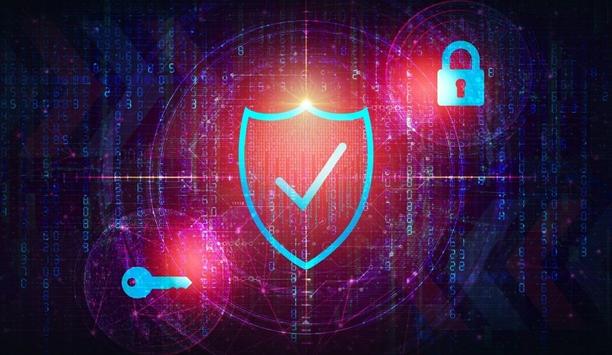
A modern guide to data loss prevention
Download
7 proven solutions for law enforcement key control and asset management
Download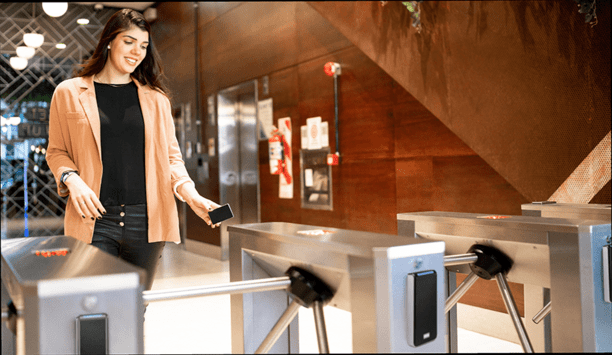
The truth behind 9 mobile access myths
Download
Access control system planning phase 2
Download
Security practices for hotels
Download
